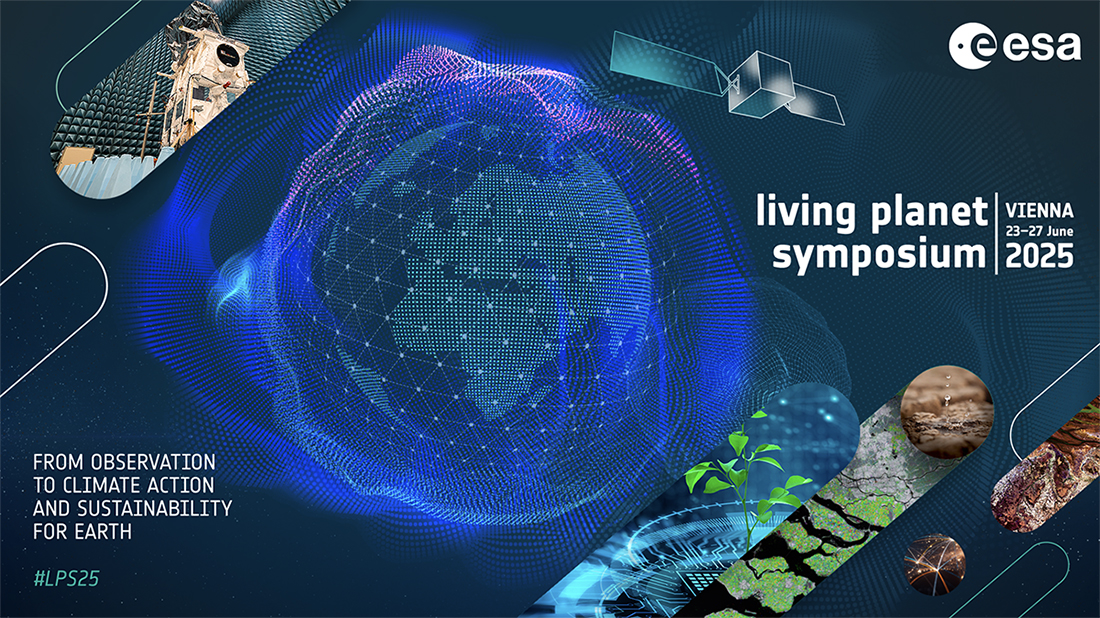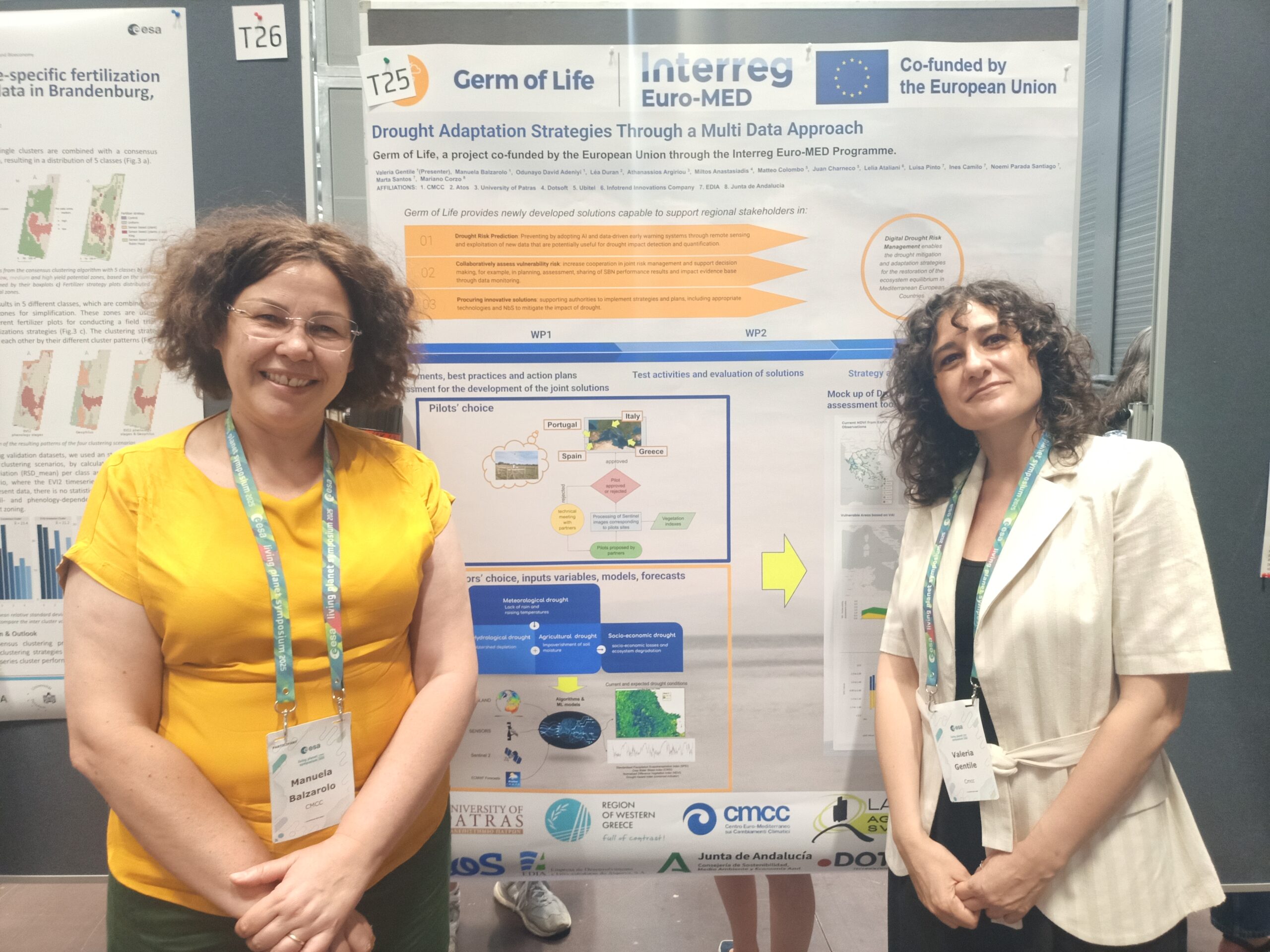Germ of Life unveiled its project at a major event sponsored by the European Space Agency: the ESA Living Planet Symposium 2025, held at the Austria Vienna Center in the Austrian capital. It was presented by two people involved in Germ of Life from the Euro-Mediterranean Center on Climate Change Foundation (CMCC), which is one of the project’s partners: Manuela Balzarolo and Valeria Gentile.
The Living Planet Symposium 2025 (LPS25) is the latest in ESA’s triennial series of global events on Earth observation. Held every three years, these symposia have grown in both size and scope, focusing on key environmental issues. In response to the intensifying climate crisis, LPS25 focused on the theme of moving “from observation to climate action and sustainability for Earth”.
LPS25 offered a forum for presenting and discussing the latest scientific findings and applications based on Earth observation data. It also provided a platform to review how data and technology contribute to addressing environmental and societal challenges. The symposium gave prominence to new products, services, missions, and initiatives, aiming to demonstrate how science, policy, business, and the economy benefit from space-based observations.
Valeria Gentile and Manuela Balzarolo showcased the Germ Of Life project and the preliminary mock-up platform. With the title ‘Drought Adaptation Strategies Through a Multi Data Approach’, and in which they have also contributed Odunayo David Adeniyi (CMCC), Léa Duran (Atos), Athanassios Argiriou (Leader Project, from University of Patras), Miltos Anastasiadis (Dotsoft), Matteo Colombo and Juan Charneco (Ubitel), Lelia Ataliani (Infofrend), Luisa Pinto, Ines Camilo, Noemi Parada and Marta Santos (EDIA), Mariano Corzo (Junta de Andalucía).

Satellite images have long been used for environmental monitoring due to their synoptic capability to cover wide areas in a short time and to collect data on the long term. Furthermore the availability of ground truth data and the advancement in machine learning tools made forecasting and prediction of environmental indicators and parameters possible, using a multi data (remotely sensed and ground based) approach. This information is useful to improve preventive management of natural risks, in order to mitigate their effects on the environment. Among natural hazards, drought is one of those most afflicting the mediterranean area, impacting peoples health, agriculture and consequently economy.
In the last decades, the frequencies of occurrence and intensities of droughts increased and the ever-growing requirement for water resources and the compound uncertainty of hydroclimatic factors aggravate the impact of droughts on agro-ecosystems. Recent research has increased understanding of droughts and led to many different definitions of droughts: meteorological, hydrological, agricultural and socio-economic drought.
In Germ of Life, a project co-funded by the Interreg Euro-MED Programme, we study the impact of drought on vegetation growth and productivity, the so called agricultural drought, with the aim of developing a drought vulnerability assessment tool in cooperation with stakeholders in Portugal, Spain, Italy and Greece. This tool is based on the use of Earth observations and climate and machine learning algorithms to calculate compound indicators of multifaceted (meteorological, hydrological, agro-ecological) droughts and their impacts on the soil-vegetation-water processes and resources. Forecasting of selected key drought indicators is done using machine learning algorithms and forecasted meteorological variables available from climate services (e.g. C3S Copernicus).
The ultimate goal of this work from Germ of Life is to promote drought adaptation strategies, guiding the actions of stakeholders and policy makers in the short term, based on the prediction of meaningful indicators and constant monitoring of natural ecosystems.
The Living Planet Symposium 2025 brought together to scientists, researchers, decision-makers, and students from around the world to share and discuss the latest advancements in Earth science and observation technologies. The event focused on several key areas, among others:
Climate Action and Sustainability Challenges: To demonstrate how Earth observation supports monitoring, mitigation and adaptation efforts to tackle environmental and societal challenges, thereby reducing the impacts of crises.
Digital Innovation and Green Solutions: To explore the integration of digital technologies and tools to enable green solutions to revolutionise the market landscape. Illustrate innovations in ground operational frameworks and their impact on operational efficiency, interoperability, data management and operational services.


